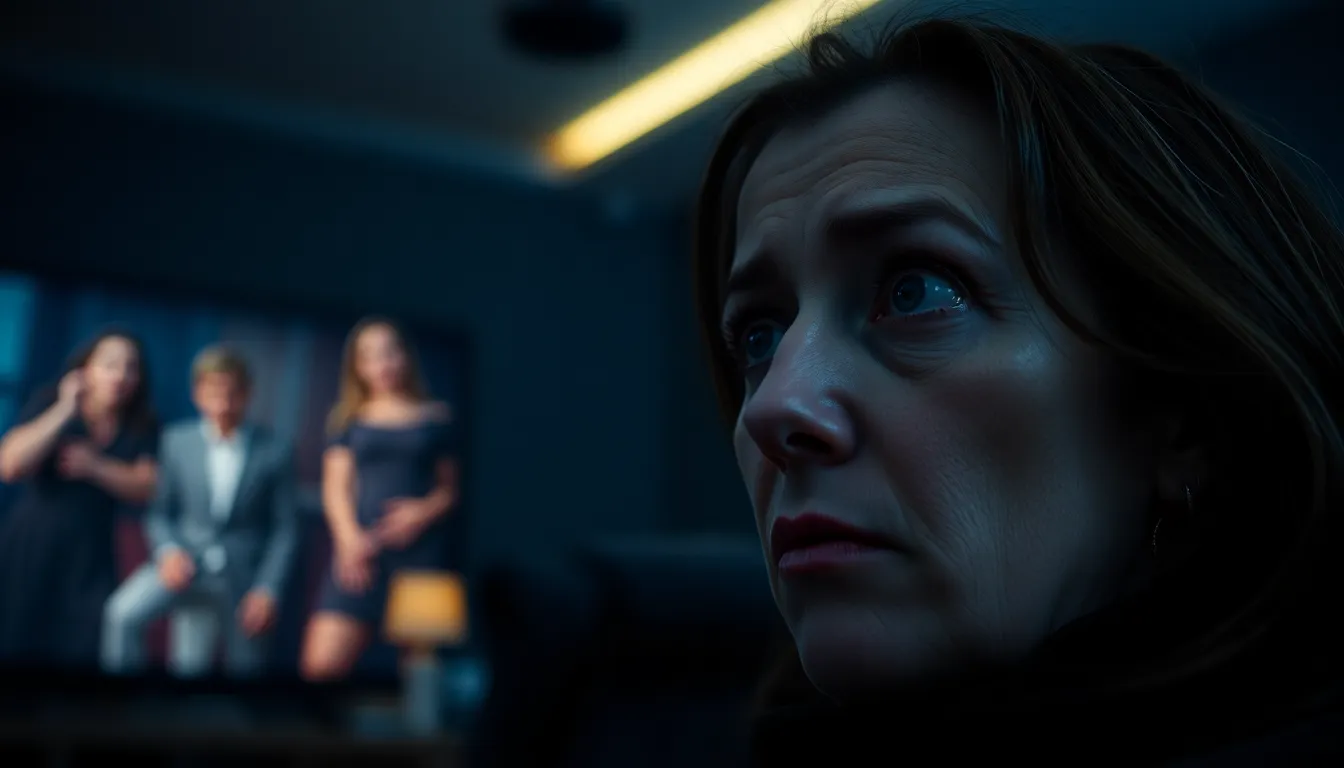Table of Contents
ToggleEver found yourself on the edge of your seat during a movie, heart racing as the tension builds? That’s the magic of cinematic build-up, the art of crafting suspense that keeps audiences glued to their screens. It’s like waiting for your favorite roller coaster to drop—exhilarating and nerve-wracking all at once.
From the subtle hints in the score to the carefully timed cuts, filmmakers know just how to tease the audience’s emotions. They create a symphony of anticipation that makes the eventual payoff feel like a grand finale. So, why do some films master this art while others stumble? Dive into the world of cinematic build-up and discover the secrets behind those unforgettable moments that leave viewers breathless and begging for more.
Understanding Cinematic Build-Up
Cinematic build-up involves crafting tension and anticipation throughout a film. This process engages viewers deeply, enhancing their emotional investment.
Definition of Cinematic Build-Up
Cinematic build-up refers to the assembly of narrative and visual elements that create suspense. Filmmakers utilize various techniques like pacing, sound design, and character development to escalate tension. Gradual revelation of information serves to deepen the audience’s curiosity about the storyline. For instance, a slow zoom on a character’s anxious expression signals impending danger or conflict. Effective build-up keeps viewers on the edge of their seats, eager to see what unfolds.
Importance in Filmmaking
Cinematic build-up plays a crucial role in filmmaking by enhancing emotional engagement. Establishing suspense allows audiences to form connections with characters and themes. Strong build-up prepares viewers for significant plot twists or climactic moments, maximizing their impact. For example, an intense musical score paired with visual cues can heighten anticipation, making a subsequent reveal more thrilling. Crafting effective build-up not only elevates the storytelling but also fosters memorable cinematic experiences that resonate long after the credits roll.
Key Elements of Cinematic Build-Up

Cinematic build-up relies on several core elements that heighten the viewer’s experience. Tension and suspense play critical roles in crafting anticipation and engaging audiences emotionally.
Tension and Suspense
Tension creates an atmosphere of uncertainty, keeping viewers on the edge of their seats. Filmmakers often use techniques like pacing and strategically placed sound to amplify this feeling. Increasing music intensity signals impending events, while abrupt changes in visuals can enhance surprise. Focused camera angles, such as close-ups, can highlight a character’s anxiety, drawing viewers deeper into the narrative. As the plot progresses, layering these elements heightens suspense, encouraging audiences to invest in the outcome. Through these methods, cinema transforms passive watching into an emotionally charged experience.
Character Development
Character development involves creating relatable and complex figures that resonate with viewers. Well-crafted characters evoke empathy and maintain audience interest throughout the film. Filmmakers unveil character backstories gradually, allowing viewers to form connections. Internal conflicts and struggles deepen emotional investment, prompting viewers to root for or against certain characters. As characters face challenges, their growth reflects the narrative’s themes, enhancing overall impact. Strong character arcs also serve to amplify tension, making pivotal moments more meaningful. Investing in character development ensures that emotional stakes rise, heightening the cinematic build-up experience.
Techniques for Effective Cinematic Build-Up
Effective cinematic build-up relies on various techniques that engage viewers. Two key aspects are score and sound design, along with visual cues and cinematography.
Score and Sound Design
Music shapes emotional responses, establishing a film’s tone and atmosphere. It enhances pivotal moments, signaling shifts in tension. Tension often builds through tempo changes and orchestral swells, guiding audience anticipation. For instance, the suspenseful score in horror films amplifies dread, while a rhythmic beat in action sequences enhances urgency. Sound design complements the score, using effects like silence or ambient noise to create unease. Well-placed sounds, such as a sudden crash or whisper, heighten tension and draw viewers deeper into the narrative. Thus, a thoughtful blend of score and sound design cultivates an immersive experience.
Visual Cues and Cinematography
Cinematography employs visual storytelling techniques to accentuate emotional stakes. Camera angles and movement play crucial roles in shaping audience perceptions. Low angles can invoke feelings of power, while high angles suggest vulnerability. Lighting, too, sets mood; dark shadows create suspense, while bright scenes evoke calmness. Filmmakers use framing to focus attention on key elements, guiding viewers’ emotional reactions. Cutaway shots and close-ups effectively reveal character emotions, fostering empathy. By strategically utilizing these visual cues, cinematography bolsters the overall cinematic build-up, enhancing viewer engagement.
Examples of Cinematic Build-Up in Film
Cinematic build-up appears in numerous films, showcasing exceptional techniques that captivate audiences.
Classic Films
Classic films often exemplify cinematic build-up with skillful storytelling. Psycho (1960) delivers tension through its iconic shower scene, where Alfred Hitchcock masterfully combines music and editing to enhance fear. Another noteworthy example is Jaws (1975), where John Williams’ score builds suspense as the infamous shark approaches its prey. Tension escalates slowly, pulling viewers into the experience. Star Wars (1977) also utilizes significant build-up during lightsaber duels, combining visual elements and sound to create dramatic moments. These films remain benchmarks for effectively crafting anticipation.
Modern Cinema
Modern cinema continues the tradition of cinematic build-up, often employing advanced techniques. Get Out (2017) employs subtle clues and unease to create suspense before pivotal moments, capturing audience attention. Similarly, A Quiet Place (2018) uses silence and sound design to amplify tension, forcing viewers to engage fully with every detail. Dunkirk (2017) showcases interwoven timelines, raising stakes and suspense across multiple perspectives. Each scene transitions seamlessly, heightening emotional investment. These contemporary examples reflect the evolution of cinematic techniques in building anticipation and delivering powerful moments.
Cinematic build-up remains a vital aspect of filmmaking that enhances audience engagement and emotional investment. By skillfully manipulating tension and suspense through music, sound design, and visual storytelling, filmmakers create unforgettable moments that resonate with viewers. The mastery of pacing and character development further deepens this connection, making audiences feel every twist and turn.
As demonstrated through classic and modern films, the evolution of these techniques continues to shape how stories are told on screen. Ultimately, a well-crafted build-up not only captivates but also leaves a lasting impression, inviting audiences to return time and again for the thrill of the cinematic journey.




